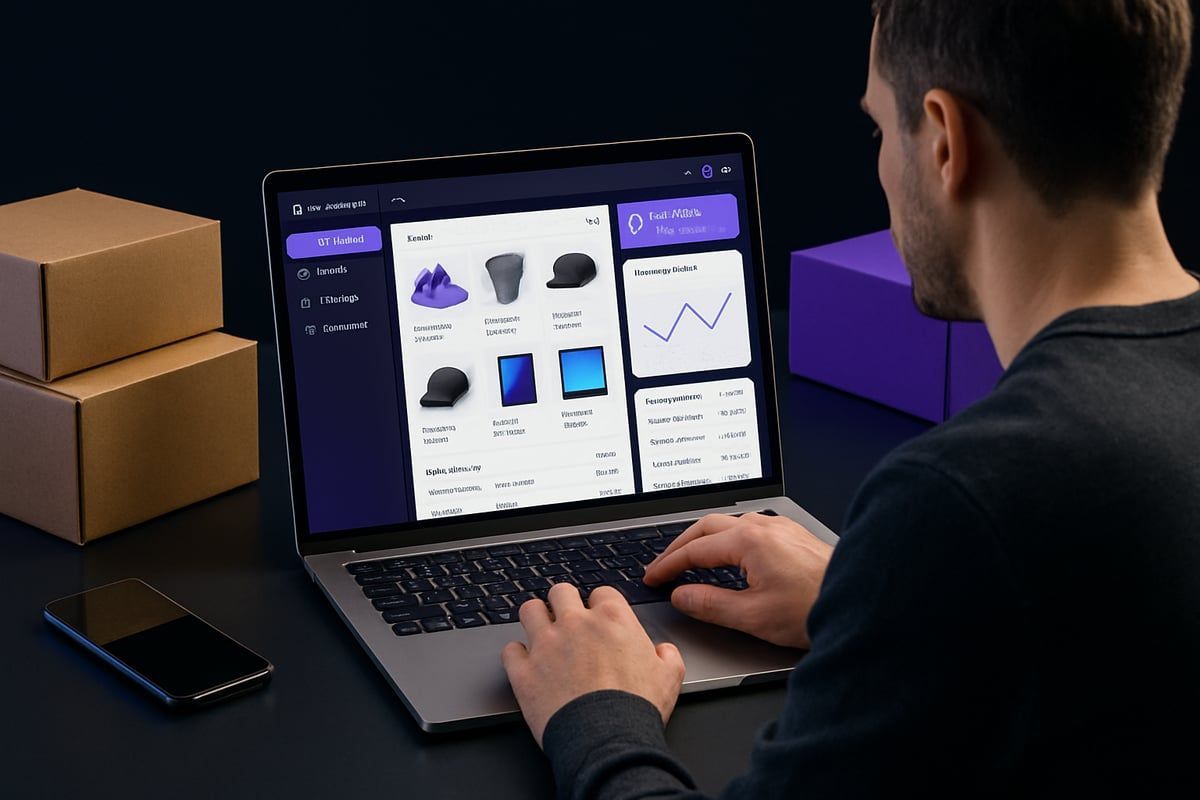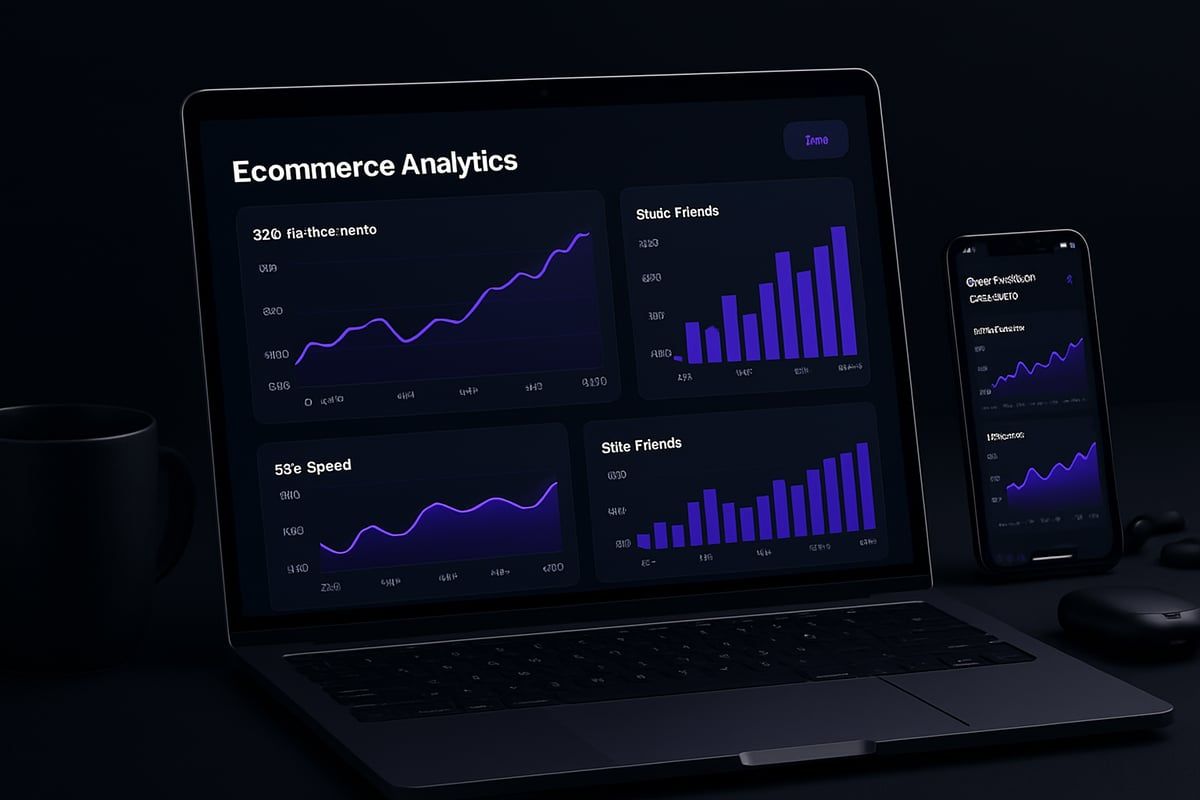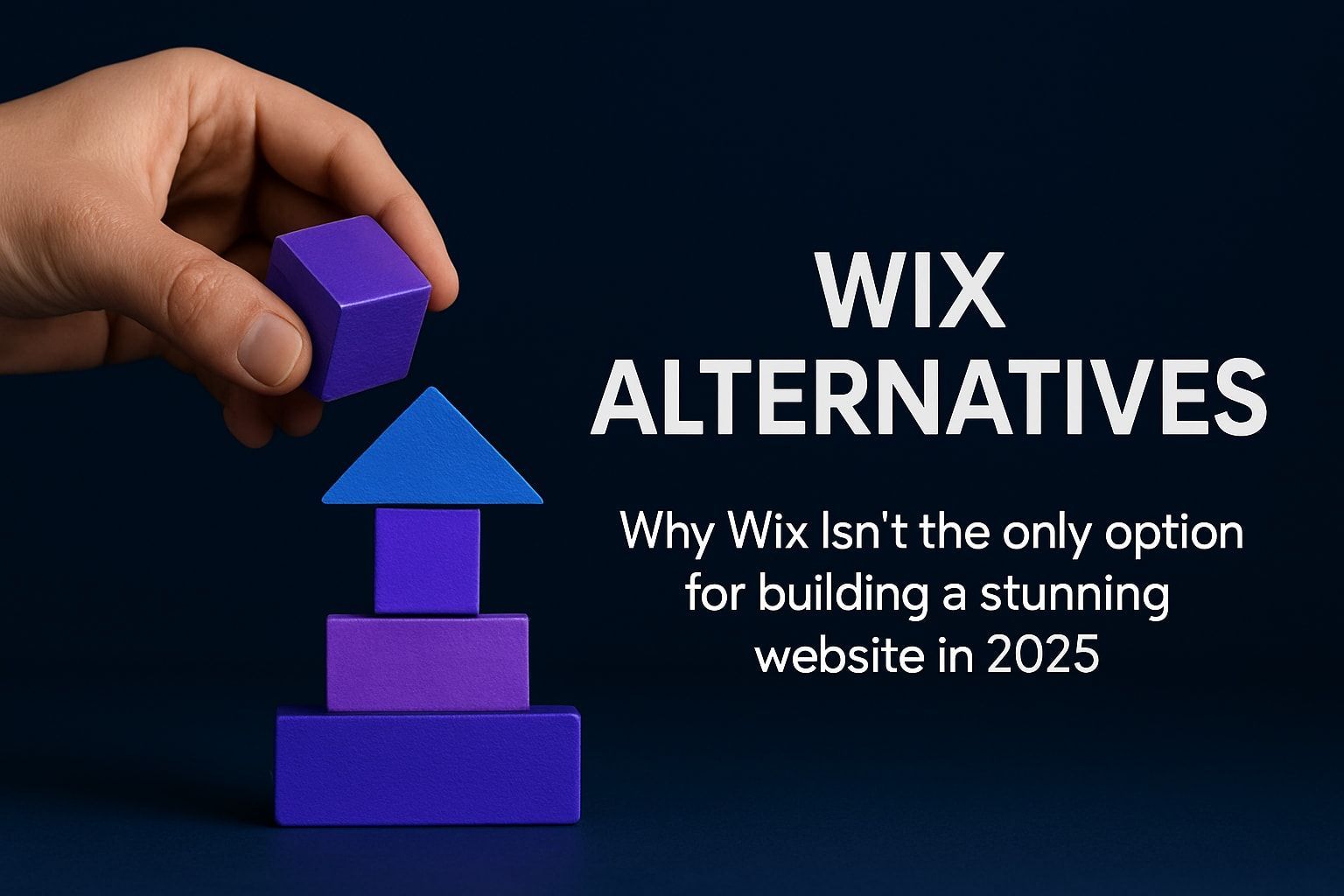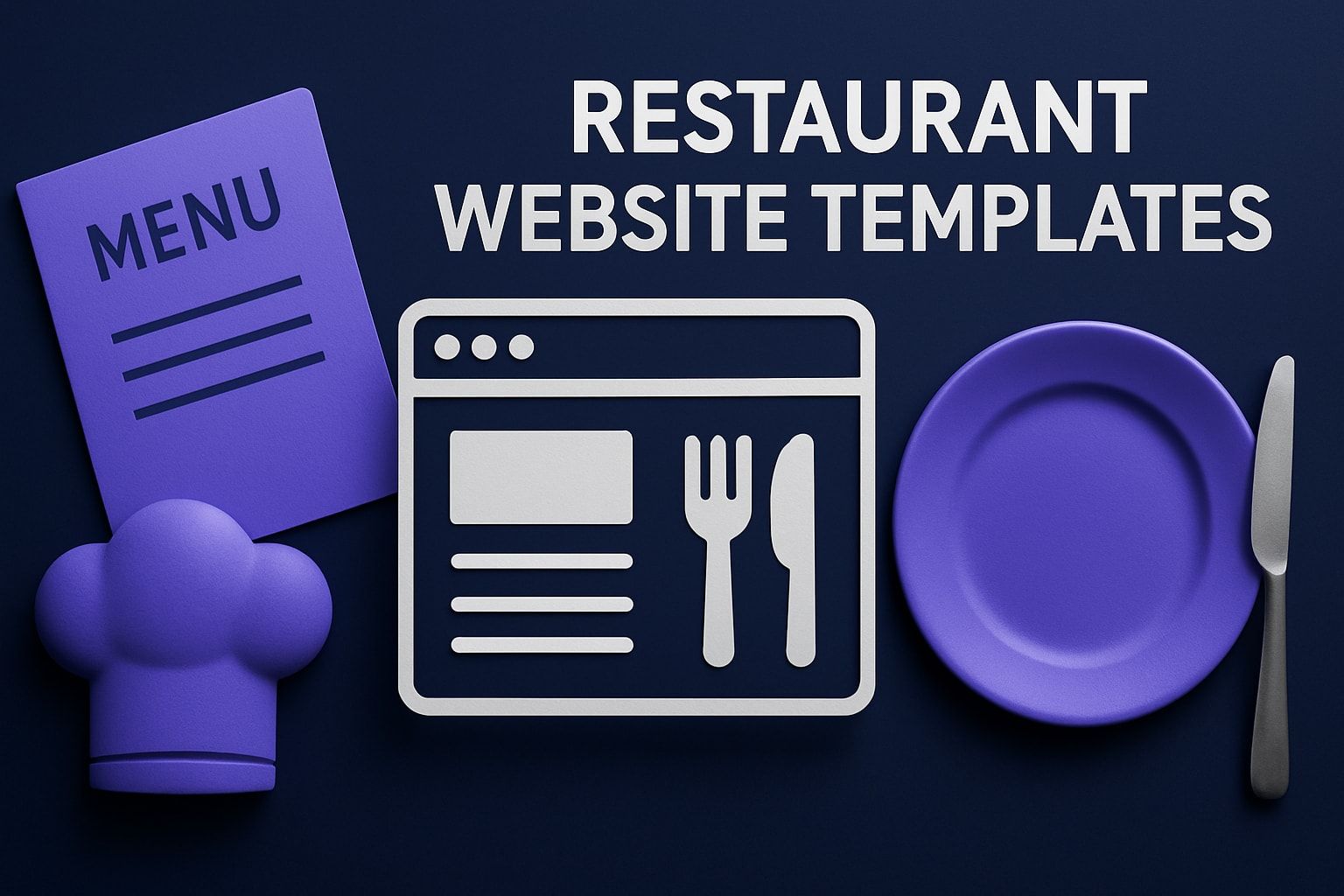Website Ecommerce Guide: Essential Steps for Success in 2025
In 2025, the global website ecommerce market is booming, offering unprecedented opportunities for new businesses. With so many brands competing for attention and technology evolving rapidly, standing out requires more than just launching a store.
A strategic approach is essential if you want to thrive and grow. This guide is packed with actionable steps and expert insights tailored for website ecommerce success in 2025.
You will learn how to choose the right platform, design for trust and conversion, optimize for mobile and SEO, streamline your operations, and future-proof your store. Follow along to build, launch, and grow your website ecommerce business with confidence.
Step 1: Defining Your Ecommerce Vision and Strategy
Launching your website ecommerce journey starts with a clear vision and a detailed strategy. Before you build, it is essential to define who your business serves, what you sell, and how you plan to stand out. Let us break down the foundational steps that will shape your path to ecommerce success.

Understanding Your Target Market
Start by researching your audience. Who are your ideal customers? What problems do they face, and what motivates their purchases? Use surveys, social listening, and competitor analysis tools to build a data-driven profile. In 2025, trends like personalization, sustainability, and AI-driven shopping are shaping consumer expectations.
Check out Global eCommerce Market Growth Projections for the latest statistics and sales forecasts. Understanding these trends helps you position your website ecommerce business to meet emerging demands. For example, Outdoor Voices targets active millennials by focusing on lifestyle branding that resonates with their values.
Choosing Your Niche and Products
Selecting the right niche is crucial for your website ecommerce strategy. Analyze product demand and profitability using tools like Google Trends and keyword research. Consider whether you want to pursue dropshipping, direct-to-consumer (DTC), digital products, or a hybrid model.
Study successful brands such as Allbirds and Kylie Cosmetics for inspiration. They found profitable niches and built strong communities. Remember to factor in legal, regulatory, and shipping requirements for your chosen products. A well-chosen niche makes your store easier to market and scale.
Setting Clear Business Goals
To drive your website ecommerce growth, set measurable goals from the start. Define both short-term and long-term KPIs, including sales targets, traffic, conversion rates, and average order value (AOV). Break these down into milestones like pre-launch, initial marketing efforts, and ongoing growth phases.
Align your goals with your available resources and the realities of your market. This clarity helps you stay focused and adjust your strategy as you learn what works. Tracking progress ensures you do not lose sight of your overall vision.
Crafting Your Unique Value Proposition (UVP)
A strong UVP is the heartbeat of your website ecommerce brand. What makes your store different? Why should customers buy from you instead of competitors? Write a concise UVP that communicates your unique benefits clearly.
For example, Supergoop stands out by offering clean, effective sun care and a strong return policy. Make sure your UVP appears across your website, from the homepage to product pages and marketing materials. This consistency builds trust and memorability.
Planning for Scalability and Growth
Think beyond your initial website ecommerce launch. Outline a roadmap for expansion, such as adding international markets, exploring new sales channels, or offering wholesale options. Omnichannel selling—across marketplaces, social platforms, and in-person—can boost your reach.
Prepare your operations for scaling logistics, inventory, and customer support. Investing in flexible systems early makes it easier to adapt as your business grows. Future-proofing your strategy now saves time and resources later.
Step 2: Selecting and Setting Up Your Ecommerce Platform
Choosing the right platform is the bedrock of any successful website ecommerce strategy. With so many options and rapidly evolving features, your decision will shape daily operations, customer experience, and growth potential. Let’s break down how to evaluate, set up, and optimize your platform for 2025 success.

Evaluating Ecommerce Platform Options
The first step in your website ecommerce journey is comparing today’s leading platforms. Shopify, WooCommerce, BigCommerce, Wix, and Square Online all offer robust solutions, but each caters to different needs. Assess ease of use, scalability, integrations, payment gateways, and security.
For a deeper dive into the pros and cons of each, refer to this Ecommerce Platform Comparison Guide 2025. Consider monthly fees, transaction costs, and available add-ons. The best choice aligns with your business model, technical expertise, and future plans.
Key Features to Look For in 2025
Modern website ecommerce demands future-ready features. Look for mobile-first design capabilities and responsive templates so your store looks great on any device. AI-powered tools for product recommendations, content creation, and personalization are now essentials, not extras.
Seek built-in SEO, analytics, and marketing automation to save time and improve performance. Omnichannel integration allows seamless selling across web, social, and in-person channels, helping your website ecommerce thrive everywhere your customers shop.
Setting Up Your Online Store
Start by registering a memorable domain that reflects your brand. Choose secure hosting with SSL certificates to protect customer data. Configure payment gateways like Stripe, PayPal, Apple Pay, or Buy Now, Pay Later solutions to maximize convenience.
For website ecommerce, setup should include fraud protection and multi-currency support. Platforms like Shopify Payments simplify this process, letting you focus on launching your store with confidence.
Customizing Storefront and User Experience
A compelling storefront sets your website ecommerce apart. Select a theme or template that matches your brand identity, then personalize navigation, menus, and product categories for intuitive browsing.
Implement accessibility best practices, ensuring your website ecommerce is usable by everyone. Consistency in colors, fonts, and imagery builds trust and makes shopping enjoyable for all visitors.
Integrating Essential Apps and Tools
Powerful website ecommerce operations rely on smart integrations. Add inventory management, shipping, CRM, and email marketing tools to streamline workflows. Use platform app marketplaces, like Shopify App Store or Square App Marketplace, to expand functionality as your business grows.
Plan for future integrations, such as loyalty programs or advanced analytics, so your website ecommerce can scale without friction as your needs evolve.
Ensuring Security and Compliance
Security is non-negotiable in website ecommerce. Implement PCI DSS compliance for payment security and display trust badges to reassure shoppers. Clearly communicate privacy policies and return conditions.
For example, successful ecommerce brands display free returns and security assurances on every product page, boosting confidence and reducing cart abandonment. Prioritizing security and transparency is key to building a reputable website ecommerce presence.
Step 3: Designing for Trust, Conversion, and Branding
Design is the bridge between your products and your customers. In 2025, a website ecommerce experience must prioritize trust, conversion, and branding from the very first click. Every design choice shapes how visitors perceive your business, decide to buy, and come back for more.

Building Trust with Customers
Trust is the foundation of every website ecommerce transaction. Customers need to feel confident in your legitimacy before making a purchase. Start by displaying your contact details and an authentic About Us page. Highlight transparent return and refund policies to ease any worries.
Showcase customer reviews and testimonials on product pages. Social proof like user-generated content and influencer endorsements gives shoppers extra reassurance. For example, Supergoop’s returns portal and visible free returns policy help build trust at every step.
- Display clear contact information
- Offer easy-to-find policies
- Feature real customer reviews
These trust signals turn hesitant visitors into loyal customers.
Creating a Visually Compelling Experience
First impressions are everything for a website ecommerce brand. Use high-quality product photography to showcase your items in real-life settings. Lifestyle images help customers picture themselves using your products.
Keep your branding consistent. Stick to a defined color palette, typography, and logo across all pages. Apply design tactics like visual hierarchy and whitespace to make your site easy to scan. Brands like Outdoor Voices use lifestyle imagery and a streamlined font palette for a modern, aspirational feel.
A visually compelling site invites users to explore and builds lasting brand recognition.
Focusing on Responsive and Mobile-First Design
Mobile devices dominate online shopping in 2025. Your website ecommerce store must be fully responsive, delivering a seamless experience across smartphones, tablets, and desktops. Test every transactional flow on multiple devices to ensure usability and speed.
Mobile-optimized checkouts, like one-click purchase and autofill, reduce friction for busy shoppers. With the average American spending over five hours daily on mobile, a responsive design is non-negotiable for capturing sales.
Responsive design future-proofs your ecommerce presence as technology and shopping habits evolve.
Designing Clear Site Navigation and Structure
Simple navigation is crucial for a website ecommerce site. Limit your top-level menu to only the most essential categories such as Shop, About Us, Contact, and Bestsellers. Use straightforward, descriptive labels that make sense at a glance.
Secondary links, like returns and privacy policies, should go in the footer. Many top ecommerce sites use simplified menus to keep customers focused and reduce confusion.
A clear, organized structure guides users smoothly from browsing to checkout, improving both experience and conversion rates.
Enhancing Conversion Rates with Smart UX
Every detail of your website ecommerce experience influences conversion. Use bold calls-to-action and concise product descriptions to drive action. Display multiple payment options and security badges at checkout for added peace of mind.
Recover abandoned carts with exit popups and follow-up emails. Regularly run A/B tests on layouts, buttons, and product placements to find what works best. For the latest guidance on persuasive copy and design, check out best practices for website text 2025.
Smart UX decisions lead to higher sales and happier customers.
Leveraging Personalization and AI
Personalization is a game changer in website ecommerce. Integrate AI-driven product recommendations and personalized content to boost engagement. Segment your audience for targeted offers and messaging that feel relevant.
Platforms like Shopify and Avantiy provide built-in AI tools for dynamic recommendations. By tailoring the shopping experience, you can increase both average order value and customer loyalty.
Personalization turns casual browsers into devoted fans.
Prioritizing Accessibility and Inclusivity
A successful website ecommerce store welcomes everyone. Follow WCAG guidelines by adding alt text to images, enabling keyboard navigation, and using readable fonts. Offer language and currency options to serve global customers.
Ensure strong color contrast and adjustable font sizes for users with disabilities. Accessibility is not just a legal requirement, it’s a smart business strategy that expands your reach.
By designing inclusively, your brand becomes more trusted and respected.
Step 4: Optimizing for SEO, Performance, and Analytics
To stand out in the crowded website ecommerce landscape, you need more than just an attractive storefront. Success in 2025 demands a relentless focus on search optimization, lightning-fast performance, and actionable insights from analytics. Each of these areas fuels growth and keeps your store ahead of the competition.

Implementing On-Page and Technical SEO
On-page and technical SEO form the backbone of every successful website ecommerce strategy. Start by researching target keywords for your products and categories, weaving them into titles, descriptions, and metadata. Ensure your URL structure is clean, logical, and easy to navigate.
Use internal linking to help users and search engines find your best-selling products and cornerstone content. Generate and submit XML sitemaps to Google Search Console to help your pages get indexed. Leading platforms like Shopify and Avantiy simplify much of this process with built-in AI-powered SEO tools and automatic sitemap creation. For a step-by-step resource, check out this Ecommerce SEO optimization guide.
Enhancing Site Speed and Core Web Vitals
Your website ecommerce performance can make or break conversions. Compress images, enable lazy loading, and use a content delivery network (CDN) to deliver content quickly worldwide. Choose fast, reliable hosting to minimize downtime and lag.
Limit unnecessary scripts and optimize your codebase for efficiency. Remember, Google’s Core Web Vitals measure loading speed, interactivity, and visual stability. Sites that excel in these metrics not only rank higher but also deliver a smoother customer journey.
Site Speed Checklist
- Compress and resize images
- Use fast hosting with CDN
- Optimize CSS and JavaScript
- Minimize third-party plugins
Leveraging Structured Data and Schema Markup
Structured data helps search engines understand your website ecommerce content. Add schema markup for products, reviews, and business details to qualify for rich snippets in search results. These enhancements can show ratings, prices, and stock status directly in Google, boosting click-through rates.
Many ecommerce platforms, including Avantiy, offer built-in schema tools, making implementation simple. Here’s a sample product schema:
{
"@context": "https://schema.org/",
"@type": "Product",
"name": "Eco-Friendly Yoga Mat",
"image": "https://yourstore.com/yogamat.jpg",
"description": "A non-slip, sustainable mat for all skill levels.",
"brand": "GreenFit",
"offers": {
"@type": "Offer",
"price": "39.99",
"priceCurrency": "USD",
"availability": "InStock"
}
}
Tracking Performance with Analytics
Robust analytics help you understand how visitors interact with your website ecommerce store. Set up Google Analytics 4 and enable ecommerce tracking to monitor sales, traffic sources, and user behavior.
Track essential KPIs such as:
- Conversion rate
- Average order value (AOV)
- Bounce rate
- Top landing pages
Most platforms provide dashboards, but combining them with Google Analytics offers a deeper view. Regularly reviewing these metrics uncovers opportunities for marketing and UX improvements.
Using Data to Drive Continuous Improvement
Continuous improvement is key to long-term website ecommerce success. Analyze customer journeys to spot drop-off points. Run A/B tests on landing pages, product descriptions, and checkout flows to see what resonates best.
Adapt your SEO, content, and product strategies based on real performance data. Use insights to refine marketing campaigns and personalize offers. This data-driven approach fuels growth and helps you stay agile as trends shift.
Optimizing for Voice and Visual Search (2025 Trends)
Voice and visual search are transforming the way shoppers interact with website ecommerce stores. Optimize product data with conversational keywords to capture voice queries. Use high-quality images and descriptive alt text to improve visibility in visual search results.
As more consumers use voice assistants and camera-based shopping, preparing your content for these channels ensures you remain discoverable and relevant in 2025.
Step 5: Streamlining Operations and Delivering Exceptional Customer Service
Operating a website ecommerce business in 2025 means juggling logistics, payments, and customer expectations. To stand out, you need reliable processes that keep your operations smooth and customers coming back.
Managing Inventory and Fulfillment
Inventory management is the backbone of every successful website ecommerce operation. Use tools that sync your stock across all channels to avoid overselling and backorders. Integrate with shipping carriers for real time rates and automated tracking.
Consider these fulfillment models:
| Fulfillment Model | Pros | Cons |
|---|---|---|
| In house | Full control | Labor intensive |
| Dropshipping | No inventory needed | Lower margins |
| Third party logistics | Scalable, fast | Less control |
Platforms that offer robust ecommerce website platform features can make inventory and shipping seamless, helping you scale efficiently.
Setting Up Efficient Order Processing
Speed and accuracy are vital for order processing in website ecommerce. Automate order confirmations, invoicing, and status updates to keep customers informed. Implement barcode scanning and digital pick pack systems to reduce errors and streamline fulfillment.
Easy returns and exchanges boost trust. Offer a simple returns portal and clear instructions so shoppers feel confident purchasing from your store.
Offering Seamless Payment and Checkout Experiences
A smooth checkout experience is essential for website ecommerce growth. Support a wide range of payment options, including credit cards, digital wallets, and buy now pay later solutions. Ensure your checkout is PCI compliant and displays trust badges to reassure customers.
Platforms with integrated payment gateways simplify multi currency payments and fraud prevention. Look for solutions that make adding new payment methods easy as you expand globally.
Providing Outstanding Customer Support
Exceptional support can turn a one time buyer into a loyal customer. Offer live chat, helpdesk, and self service options like FAQs and knowledge bases. Add chatbots or AI assistants for 24 7 coverage and faster answers.
Personalize support by using customer order history and preferences. Quick, helpful responses build trust and keep your website ecommerce reputation strong.
Building Customer Loyalty and Retention
Customer loyalty is the lifeblood of website ecommerce in a competitive market. Launch loyalty programs, referral rewards, and subscription offers to encourage repeat purchases. Use email and SMS campaigns to remind customers of new arrivals or special deals.
Understanding consumer behavior trends in eCommerce 2025 helps you tailor loyalty strategies to evolving preferences, like sustainability and personalized experiences.
Preparing for Global and Omnichannel Expansion
As your website ecommerce business grows, global and omnichannel selling become essential. Enable international shipping, currency conversion, and local payment methods to reach new markets. Integrate with top marketplaces and social platforms to meet customers where they shop.
Plan for B2B or wholesale features as you scale. Adopting a flexible approach to operations ensures you can adapt quickly and keep pace with ecommerce innovation in 2025.
Step 6: Marketing, Scaling, and Future-Proofing Your Ecommerce Website
Ready to turn your website ecommerce project into a long-term success story? In this step, you’ll learn how to attract customers, expand your reach, and keep your business ahead of the curve in 2025. Let’s dive into the strategies that will make your website ecommerce thrive.
Crafting a Multi-Channel Marketing Strategy
A robust marketing plan is the backbone of every successful website ecommerce business. Start by combining organic and paid strategies to reach your target audience. SEO, content marketing, and email campaigns build trust over time, while paid ads on Google and social platforms drive immediate traffic.
Expand your presence with:
- Social media marketing (Instagram, TikTok, Facebook)
- Influencer partnerships and affiliate programs
- Retargeting ads to recover abandoned carts
The key is to diversify, test new channels, and double down on what brings the best ROI for your website ecommerce store.
Harnessing the Power of Content and Storytelling
Content is the bridge that connects your website ecommerce brand to customers. Launch a blog or resource center with helpful guides, product tutorials, and customer stories. Video content, such as unboxings and behind-the-scenes clips, builds authenticity and keeps your audience engaged.
Storytelling helps you stand out in a crowded market. Let your brand values shine through every piece of content. Brands like Beardbrand use educational articles to turn visitors into loyal fans, proving that trust grows with transparency.
Leveraging Automation and AI for Marketing
Automation and AI are game changers for website ecommerce in 2025. Set up automated email flows for cart recovery, welcome series, and personalized product recommendations. Use AI analytics to segment your audience and deliver tailored offers.
Many ecommerce platforms now include built-in marketing automation and AI-driven insights. This technology helps you save time, boost conversions, and ensure your website ecommerce marketing is always data-driven.
Scaling Your Store Operations
As your website ecommerce business grows, scaling operations becomes critical. Prepare your infrastructure for high-traffic events like product launches or holiday sales. Integrate inventory management tools to keep stock levels accurate and avoid overselling.
Consider expanding to new channels such as marketplaces or in-person POS systems. Analyze your best-selling products and customer segments to focus your resources where they matter most. Efficient scaling leads to happier customers and sustainable growth for your website ecommerce store.
Adapting to 2025 Ecommerce Trends
Stay ahead by embracing the latest website ecommerce trends. Consumers demand sustainability, ethical sourcing, and transparency. Highlight your eco-friendly practices and supply chain details to build trust.
Watch for emerging tech like AR/VR shopping experiences, voice commerce, and Web3 integrations. Brands such as Allbirds and Satya Organic are already leading the way by making sustainability a key part of their website ecommerce strategy.
Table: Hot Ecommerce Trends for 2025
| Trend | Why It Matters | Example Brands |
|---|---|---|
| Sustainability | Builds trust, meets demand | Allbirds, Satya Organic |
| AR/VR Shopping | Enhances online experience | IKEA, Warby Parker |
| Voice Commerce | Eases product discovery | Amazon, Walmart |
Monitoring Industry Benchmarks and Competitors
Regularly track your website ecommerce performance against industry benchmarks. Monitor KPIs like conversion rate, average order value, and customer retention. Use competitor analysis tools to spot trends and uncover new opportunities.
Look to brands like MVMT and Chubbies for inspiration. Their creative marketing and customer-centric approach can spark new ideas for your own website ecommerce strategy. Staying informed helps you pivot quickly and outperform the competition.
Future-Proofing Your Ecommerce Website
To keep your website ecommerce store resilient, invest in flexible platforms, reliable integrations, and top-notch security. Update software and plugins frequently to avoid vulnerabilities. Foster a culture of experimentation, testing new features and approaches.
If you are considering a platform switch or want to compare your current solution, check out this Top eCommerce Platforms for 2025 guide to make an informed decision.
Continuous learning and adaptation will ensure your website ecommerce business thrives no matter what the future holds.
As you’ve seen, building a standout ecommerce website in 2025 is all about strategy, smart design, and staying ahead with the right tools. If you’re ready to put these essential steps into action and want a platform that makes it easy—no coding headaches, just creativity and growth—there’s never been a better time. With Avantiy, you can quickly launch a professional online store, connect with your audience, and set yourself up for lasting success. Why wait to turn your vision into reality?
Start Building Your Website Today
Start building your new website today
No credit of debit card required start building today




